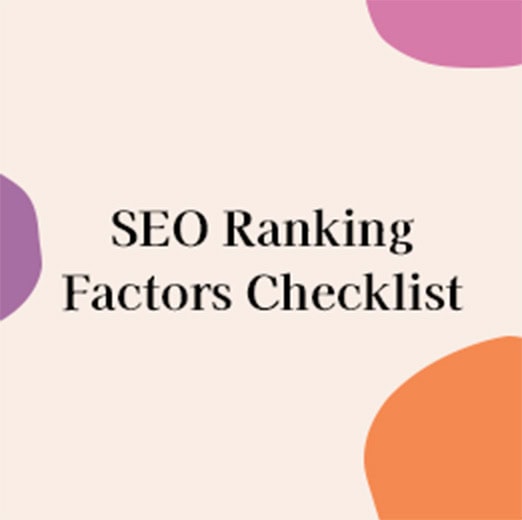Preparing your Clothing Brand for Wholesale Success with Fashion Wholesale Agent Misty-Dawn Paulson
Thinking of going wholesale? How do you know if your business is ready? And what do you need to do and be cautious of before diving into this area of distribution?
In today’s article, Misty-Dawn Paulson is here to help you navigate some of those big questions and considerations on entering the wholesale market.
As a fashion wholesale agent and owner of Mstydon Group Fashion Wholesale Agency in Vancouver BC, Misty-Dawn has worked with a range of successful clothing brands that focus on eco-friendly and ethical production. She is the link between fashion designers and retailers—helping designers bring their products into new markets and gain visibility, and allowing retailers to gain access to high-quality products made by brands with aligned values and unique stories.
Misty-Dawn was a guest on one of my podcast episodes. And in today’s article, I will highlight some of the valuable wisdom and advice that she shared during our conversation.
Here is what you will learn about:
- The significance of wholesale and why it is an important distribution channel for clothing brands
- Essential criteria and characteristics a brand needs to be considered "wholesale-ready"
- How brands can set competitive prices while maintaining healthy profit margins
- How production capacity and lead times factor into readiness for wholesale
- The importance of meeting quality control standards for successful wholesale operation
What is the significance of wholesale, and why is it an important distribution channel for clothing brands?
Misty-Dawn:
Simply put, wholesale representatives are the “middlemen”. We connect designers with retail stores and we connect retail stores with amazing designers.
At trade shows, retailers look at a set of samples made by designers to plan which products they would like to carry in their stores for the future season.
The wholesale channel is important because it is a really good way for the brand to gain visibility and awareness. You can sell your brand on your own website as much as you want, but if you want it to truly make an impact, and you want people to notice your brand, wholesale is one of those beautiful ways to reach many more people. With wholesale, you don’t have to be the one sitting at the computer doing all the work marketing and sales of products all the time.
What are the essential criteria and characteristics a brand needs to be considered "wholesale-ready"?
Misty-Dawn:
In order to be “wholesale-ready”, you need to make sure that all the kinks in your manufacturing are ironed out first.
I have worked with many brands who said they were ready to go wholesale, but there were many problems with their manufacturing. For example, their manufacturers couldn't keep up with production because they didn’t anticipate the influx of orders that were placed. In other instances the quality went down and the price went up. If you want to go wholesale, you and your manufacturer need to be on the same page.
How can brands set competitive prices while maintaining healthy profit margins?
Misty-Dawn:
Many of my friends attempting wholesale often overlook the importance of making sure their pricing is ready. They assume they can start from the top, beginning with the retail price and work down to the wholesale price. However, this approach neglects essential cost considerations.
I recommend a thorough analysis of costing and desired retail prices to determine viable profit margins. Start by examining all-in costs, including manufacturing expenses, fabric, and shipping. Factor in additional costs for overseas manufacturing, shipping, and overhead such as marketing.
I know we are going through a crazy-inflation cycle right now, and everything is becoming more expensive to produce, but here's a basic sample illustration of how you should set your wholesale price:
If a garment costs $25 to manufacture, add $5 for shipping and marketing, bringing the total to $30.
Then, to the $30, apply a keystone markup (an industry term that means doubling the cost)—resulting in the wholesale price of $60.
Transitioning from wholesale to retail, you should do at minimum another keystone markup. Better yet, consider a higher markup, such as 2.2 or 2.5. This means that if your wholesale price is $60, then your retail price should range between $120 and $150.
To ensure readiness for wholesale, the retail prices on your website should align with or exceed these calculated benchmarks. Your retail prices must also be priced appropriately for your target market. If your production costs are too high, retail prices may become overpriced for the market, and nobody will buy your products.
Talk with your manufacturer regarding order minimums and potential discounts if you eventually order at higher quantities. I always advise brands that are just starting out to begin with ordering the bare minimum quantity. Base your pricing on that cost.
If you go wholesale and have the demand to increase orders with your manufacturer, your production costs could potentially go down (if the manufacturer offers you volume discounts). This will leave you with more profit margin as you keep your retail price the same.
How do production capacity and lead times factor into readiness for wholesale?
Misty-Dawn:
I usually remind my designers or new designers that I am working that we do sell six months in advance. For example, during the fall, I would sell wholesale products for the upcoming spring/summer of the following year. This means your designs must be done a year in advance, since you have to factor in the time it takes to manufacture your samples.
As a side note, be aware that your sample production is always more expensive than the actual production cost of your garment. So you do have to factor that in as well to all of your overhead.
How do quality control standards impact the success of a wholesale operation?
Misty-Dawn:
Quality control standards also come into play when considering going wholesale. The quality of your product does not only impact the reputation of your brand, it impacts the reputations of your retailers as well.
At the end of the day, it’s all about putting care into your work. For example, inspect your seams, make sure there are no stains from sewing machines, or holes in the garments before they get shipped to the retailer. Ensure that your tags are on properly and that the garments are sized properly.
I recently saw an incident with one of my designers whose manufacturer put all the extra small tags on the extra large garments, and all the extra large tags on the extra small garments. Nobody noticed, and they were shipped out. Thankfully, I work with some amazing retailers and some amazing designers and we resolved the issues in a timely manner.
You as a designer and your team really have to be on top of making sure that you're putting your best foot forward and the only way to do that is to make sure that the garments coming out are produced to the highest standard.
Thanks for taking the time to read this article. As a bonus, here is a handy summary of the main takeaways from today’s article about preparing your brand for wholesale success:
Criteria for a Brand to be "Wholesale-Ready":
- Essential to iron out manufacturing issues before entering wholesale.
- Coordination between the brand and manufacturer is vital to meet production demands.
- Problems like production delays or quality issues can hinder a brand's readiness for wholesale.
Setting Competitive Prices for Healthy Profit Margins:
- A comprehensive cost analysis, including manufacturing, fabric, shipping, and marketing expenses, is crucial.
- Consider higher markups when transitioning from wholesale to retail to ensure healthy profit margins.
Production Capacity and Lead Times in Wholesale Readiness:
- Wholesale operates six months in advance, necessitating a year-ahead design completion for upcoming seasons.
- Sample production costs are higher than actual production costs, influencing overall overhead considerations.
Impact of Quality Control Standards on Wholesale Success:
- Quality control is vital for the brand's and retailer's reputation.
- Attention to detail, including seam inspection, proper tagging, and size accuracy, is crucial.
- Need to be continuously vigilant to ensure garments meet the highest standards.
Are you wholesale ready?
Now that you have read Misty-Dawn’s advice on getting your brand ready for wholesale, how do you feel about the current status of your business? If you’re feeling ready and want to connect with Misty-Dawn to get started on selling wholesale, you can reach her at Mystydon Group Inc.
If you want to grow your business through wholesale distribution, but need help with getting your manufacturing, pricing or quality control standards ready, give me a call. As a fashion business consultant, I can assess your business and create a tailored strategy for you to reach your goals.




